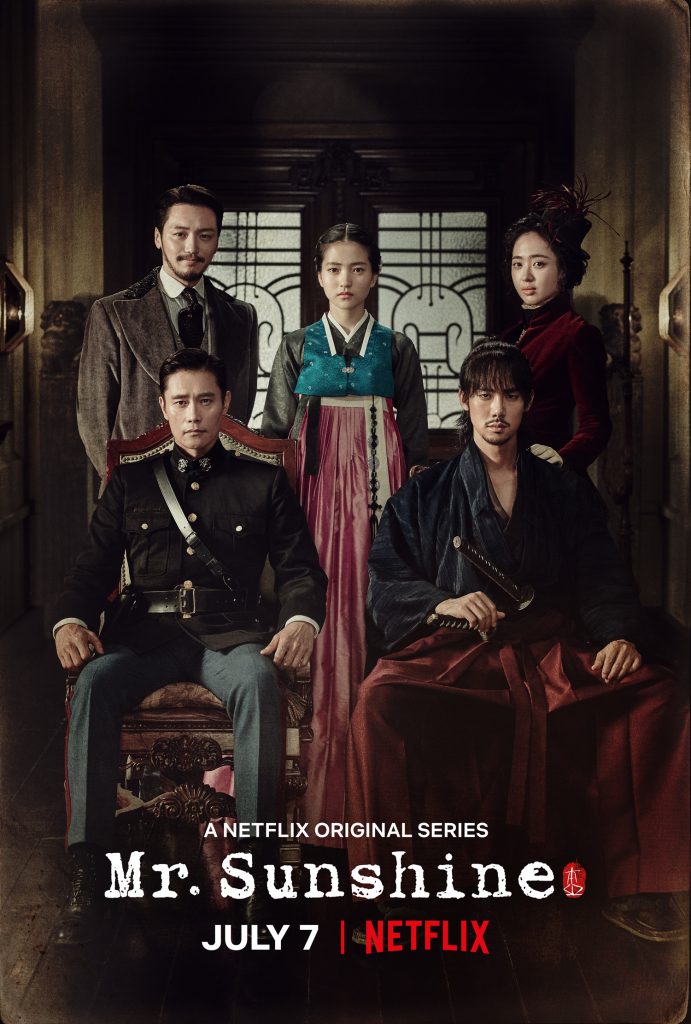By Iylia Marsya Iskandar
[Major spoilers ahead]
“Mr. Sunshine” is a Korean, historical melodrama that starts off in 1871 with the major portion of the plot taking place in the years between 1894 and 1907 in late Joseon (former name of Korea). It is the time when Joseon is slowly adopting Western civilisation.
People switched to more western outfits as compared to wearing the hanbok. Men cropped their hair, to sport a shorter, more Western look, women donning long gowns. The monarchy was beginning to weaken. Slavery was abolished, freeing slave families from serving one noble family for generations.
Foreigners walked the city of Hanseong (former name of Seoul), following the United States expedition in 1871 and these foreigners helped build railroads, trains, trams, brought electricity, different fabrics, and a new popular drink called coffee to Joseon. Schools for women opened up, and in one of the English classes the female leads, Go Ae-shin learns the word sunshine, associating it with the male lead, Eugene, leading its way to be the title of this drama.
The drama is fictitious yet based on historical events. In a glimpse, the dramas narrative revolves around the forbidden romance between two people, (readers can read the plot synopsis here) and their fight against all odds to be together but the actual story is depicted in the setting. “Mr. Sunshine” gives credit to countless number of unnamed people who fought to protect Joseon from the imperialists. Even before the complete invasion in Joseon, a huge part of the country was already being sold away to Japan.
Throughout the drama, the audience gets to see the heart-wrenching yet moving struggle of the Righteous Army and their fight to save Joseon from falling into the wrong hands, exposing the painful side of Korean history.

A scene was based on a black and white photograph of the Righteous Army, taken in 1907 by Frederick McKenzie, a writer and war journalist who worked for the London Daily Mail. The episode also stayed true to history, using quotes from McKenzies interviews such as, œWe know that all of us are bound to die if we continue this fight. But wed absolutely hate to live as Japanese slaves. Wed much rather die as free men. Eugene brings the foreign journalist to the Righteous Army, which agrees to the interview and to being photographed in the belief that the world should learn about its righteous struggle. That photograph is, in fact, the only existing photograph of Koreas freedom fighters.
The show also portrayed strong female characters who fight for a great cause. The majority of the media we consume portrays œfeminine characters to be weaker and in need of protection from strong male leads. However, most of the women in the show are the opposite of societys widely accepted gender stereotypes. They are characters that break toxic femininity and instead show what true femininity is by being responsible, caring, loving, passionate, bold, and daring “ and as a female myself, it was empowering to see these women on screen.
Lady Go Ae-shin, who was born into one of Joseons noble family and disguises herself as a man to be a sniper for the Righteous army stands apart in her unwavering patriotism to protect her country. She chooses her country over her love interest several times. She learns to accept the privilege she receives because of the family she was born into but also is not ashamed of protecting a society that has always been kind to her, but maybe not to others.
Next, Kudo Hina, a Korean woman who inherited and independently run a Western-style hotel from an old Japanese man (who she murdered with good cause). Were introduced to her when she defends one of the hotel waitresses from an abusive male customer. She tells the girl, œIf anyone tries to harm you or take advantage of you, bite that person instead of breaking into tears.
Kudo Hina also portrayed patriotism by bombing her hotel on purpose as the main base for Japanese soldiers. Kudo Hina is manipulative and sharp, always two steps ahead of everyone else. She is always poised and always strong. Like Ae-shin, our lady by day, sniper by night, Kudo Hina embodies total feminine strength in a time where any sign of female power is only an exception to the rule.
“Mr. Sunshine” is a beautiful depiction of feminism not only because of the women but because of the men as well. The way the three central male characters treat Ae-shin and Kudo Hina as equal partners and friends, even when these women are breaking so many rules, presents us with characters driven by mutual respect and equality. Feminism, of course, is not just about women being relentless. It is also about the men who treat them as equals.
The dramas strength lies in the characters and their relationships. The narrative described characters in a way that viewers would be emotionally attached to them. The characters’ connections were established to fit in the conflicts raised in the story. Even when you do not know much about Koreas history, the plot is easy to follow. With the elaborated picturesque scenes, the drama is compact and fast-paced yet a beautiful work.
The screenplay execution is a piece of art in its own way. The ending is already foreshadowed in earlier episodes but the path towards the ending is still gut-wrenching and satisfying in all the right places. Fans of historical dramas might enjoy this but it is highly noted that this piece of work is fictitious and compact with scenes that inspire heroism.
To sum up, the phrase œgun, glory, sad ending (the first three English phrases Ae-shin learned) best describes the show. ***
